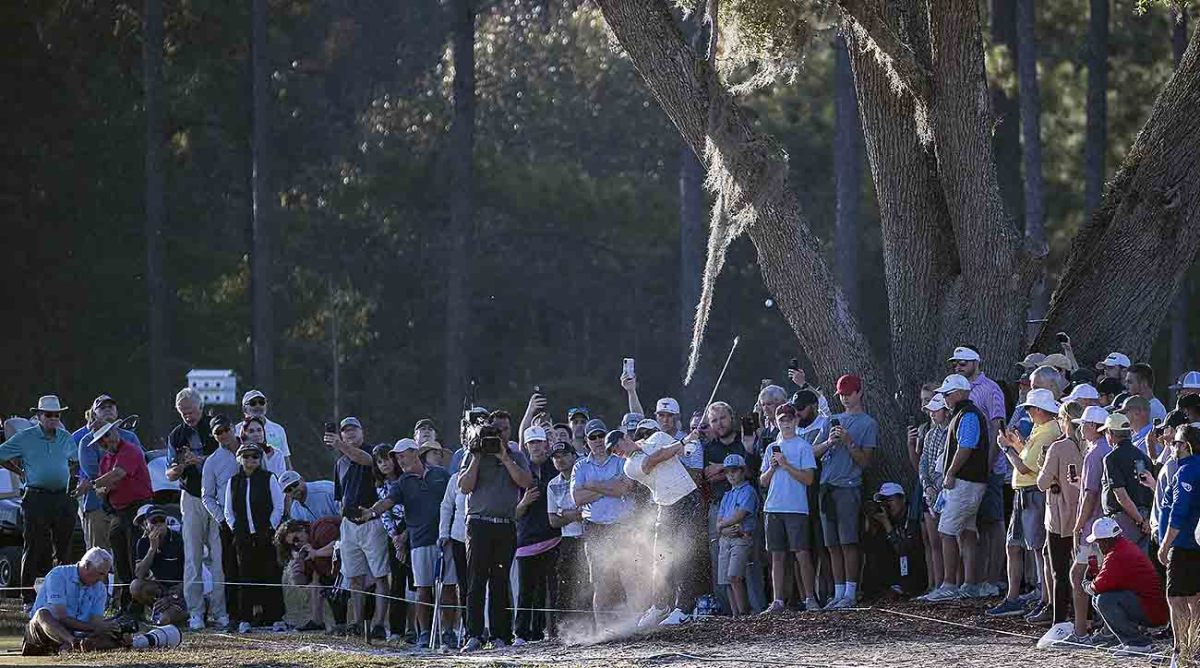LIV Golf Doesn't Have a Monopoly on Limited-Field, No-Cut Tournaments

Some musings from around the world of golf ...
* What’s the over/under on when Greg Norman is shown the door by his Saudi superiors? Regardless of how much credit the Shark deserves for getting LIV Golf airborne and lording over its first five months of flight, his role with the rebel faction has reached the point of diminishing returns. Between his rough-edged persona and the league’s need for more refined leadership—someone the PGA Tour could take seriously in any potential discussions on a truce or eventual merger—how much longer can Norman last as CEO?
Just wondering ...
* Was the year-end collection of events known as the “silly season” a more effective cap to the Tour schedule than the endless one it has now? The old Skills Challenge, plus a couple of mixed-gender tournaments and the highly popular Skins Game, usually held on Thanksgiving weekend from 1983-2008, brought levity and offered a welcome respite to the 11-month chain of stroke-play starch on the current docket.

* If it takes a limited field and no cut to lure the game’s best players into showing up at a $10.5 million event in late October, what does that say about the significance of the rest of the fall series? Last week’s CJ Cup exposed the glaring difference between the haves and have-nots in the wraparound format—in essence a scoring system that never really worked and will be euthanized at the end of this year.
Given that nine of those autumn tournaments are expected to remain in business, are we looking at what amounts to a two-month session of Q-School? The Tour has already announced that FedEx Cup playoff eligibility will be reduced from 125 players to 70 in 2023. Only those 70 are assured full-time status for the following season, a long overdue move that further stratifies the game’s elite from its rank and file. With a huge increase in “guaranteed money” allocated to that top tier through the designation of “super events” featuring purses of up to $25 million, does anyone outside the top 70 have a realistic chance of moving into the Tour’s new upper-class neighborhood?
Confused yet?
Get in line.
* By the way, how did the Zozo Championship, which had the same, invitational-sized field as the CJ Cup (78 golfers) and even more prize money ($11 million) than the star-studded gathering in South Carolina, fail to attract more than two of the top 10 guys in the Official World Golf Ranking? Have America’s best players become that opposed to competing overseas? Have things gotten that comfortable back home?
Just wondering ...
* Those back-to-back, deep-into-fall Tour stops without a cut—isn’t the reduction of competitors after 36 holes exactly why LIV Golf is viewed by many as such a meaningless outfit? For that matter, why was the Tour’s only trip to Asia all year, a Japanese tournament with an obvious lack of starpower and an almost embarrassing shortage of representation from the United States, conducted in a format in which every contestant got paid, regardless of what they shot?
If LIV Golf’s tournaments are excluded from the World Ranking, shouldn’t the Zozo have been accorded the same lack of consideration?
* To that end, at what point will LIV’s 48-man picnics become a restrictive and foolish concept? In case you haven’t noticed, the no-cut thing is a huge deal in professional golf, especially at the highest level. The lack of a performance-related standard for any amount of compensation invites all types of unsavory creatures into the mix. In the case of Norman’s troupe, it means you could shoot 93-85-92 and earn credit in the ranking, which is simply unacceptable. Forty-eight participants is basically half a golf tournament. When all 48 are still around on Sunday afternoon, you don’t have to ask yourself why the establishment is turning its back on you.
* Oh, and how about Adrian Otaegui? After playing in three of the first four LIV Golf gatherings, the Spaniard leapt back to his home circuit, now called the DP World Tour, and promptly cruised to a six-shot triumph at the Andalucia Masters. Haven’t we been told a thousand times that there would be no league-hopping for those who chose Norman over normalcy?
Otaegui joined Ian Poulter and Justin Harding in a legal challenge to their playing rights back in July, however, and were granted temporary permission to cross the competitive line by a British agency called Sport Resolutions. As far as one can tell by its website, this non-profit organization has no affiliation with any judicial process in the United Kingdom, much less standing as a credible substitute for a court of law.
Did these three guys jump through a loophole wide enough to allow them to compete on what has all but become enemy turf? Why haven’t other players sought freedom through some global company that specializes in “arbitration, mediation, tribunal and expert opinion” to resolve 1,700 disputes in 40 sports over the last 10 years? Is it really that easy? Should it be that easy?
I’m not just wondering anymore. I’m thinking this game is headed to hell in a hot rod with dollar signs painted all over it.
Editor's Note: Sports Illustrated’s parent company, Authentic Brands Group, has a licensing and endorsement partnership with Greg Norman. SI is not a party to this deal.
